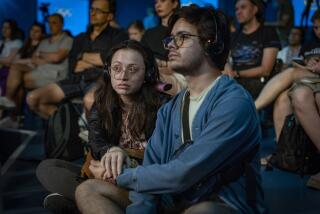Plucked from war flames, a beloved Ukrainian artist’s legacy lives on
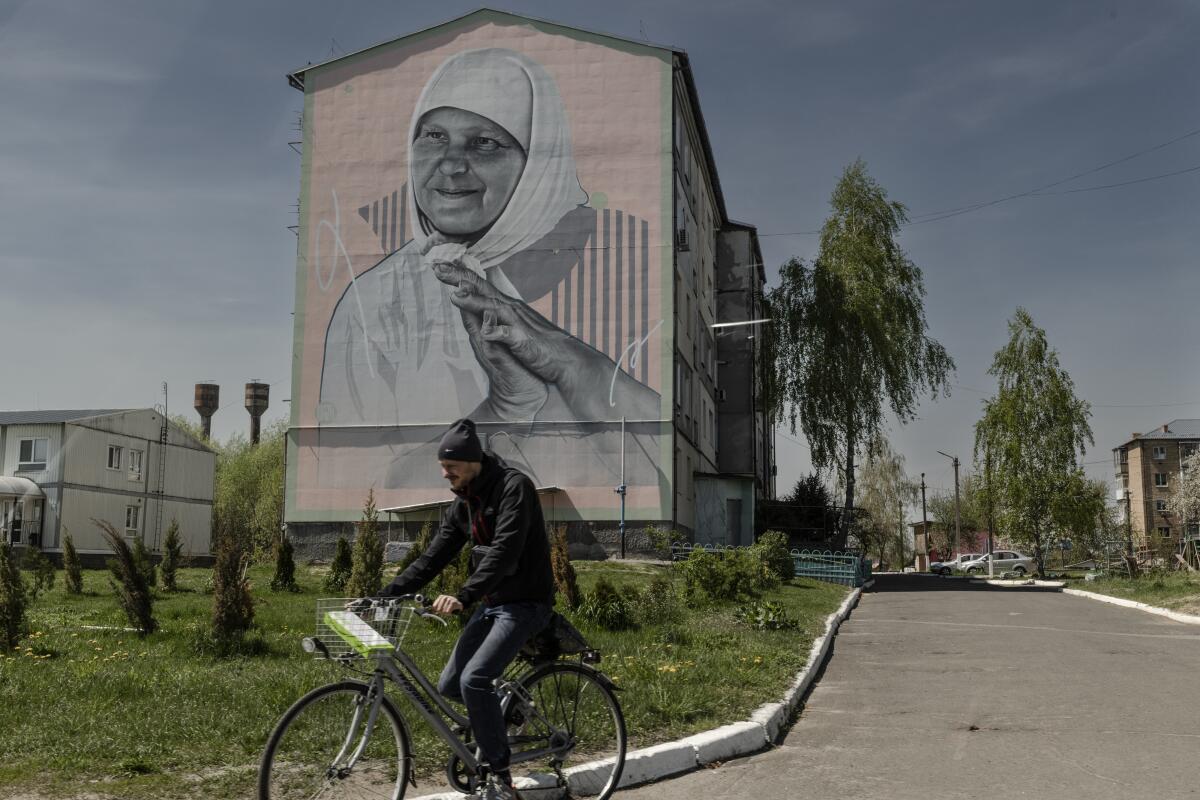
A mural in Ivankiv, Ukraine, depicts local artist-heroine Maria Prymachenko.
IVANKIV, Ukraine — The war was only hours old, but the townspeople of Ivankiv already had every reason to fear the worst.
Bombs were raining down on the normally sleepy northern Ukrainian community on the River Teteriv, which lay in the path of a vast, clanking Russian armored column setting its sights on the capital, Kyiv, 60 miles to the southeast.
The din of battle drowned out the bellows of frightened livestock. Explosions shook the earth. As they sheltered in freezing cellars, many local people thought of the priceless patrimony here in this unassuming place.
“Our pearl,” said a visibly emotional Nadiya Biryuk, the 59-year-old head of Ivankiv’s cultural department. “Our jewel. Our treasure.”
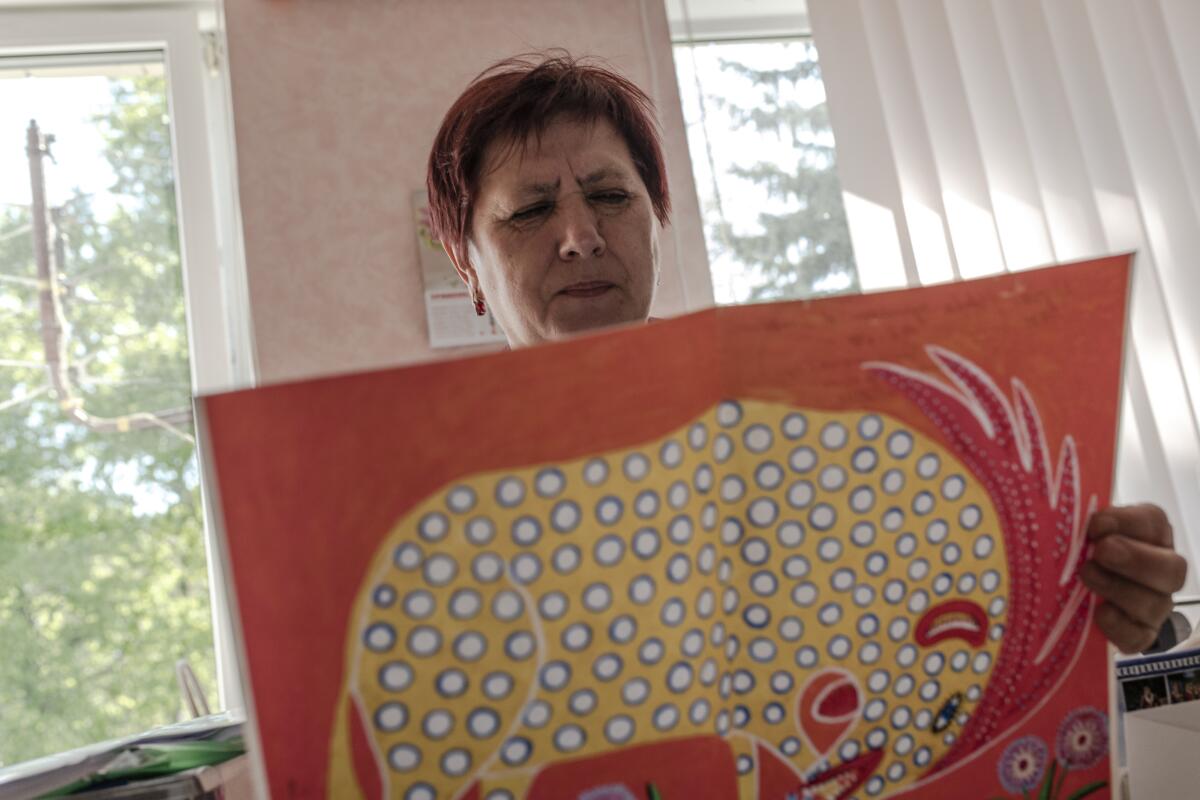
Nadiya Biryuk, head of the city of Ivankiv’s cultural department, holds a work by Maria Prymachenko.
She was talking about the town’s small collection of works by perhaps the country’s most beloved folk artist, Maria Prymachenko, whose color-saturated, dreamlike images of mythical beasts, otherworldly birds and phantasmagoric flora were admired by Picasso and Chagall, acclaimed by art scholars and embraced by many ordinary Ukrainians as an expression of immutable national spirit.
Although celebrated internationally and showered with accolades at home, Prymachenko, who suffered from polio, spent much of her life living and working in a simple brick house in a tiny village, Bolotnya, near Ivankiv’s center.
Before she died in 1997, at age 88, she made a gift of a handful of paintings, among hundreds created in her lifetime, to the town’s Historical and Local History Museum, an unpretentious seven-room structure nestled in the parkland of a onetime nobleman’s retreat.
When the war broke out Feb. 24, the museum housed 14 of Prymachenko’s paintings, together with other works including ceramics and embroidery, Biryuk said. The collections also included valuable 300-year-old icons and artifacts of what had been, before Soviet-era pogroms and the Holocaust, a thriving local Jewish community.
On a cold but sunny late morning the day after the start of the Russian invasion, Anatoly Harytonov, a security guard who lives next door to the museum, felt his chest rumble with the deep, thunderous impact of three missile strikes. Daring to emerge from underground, he saw black smoke. It had been a direct hit; the museum was ablaze.
With two other local men, Harytonov, 47, swiftly worked to pry the metal bars off one of the windows, even as they wondered if more missiles would fall.
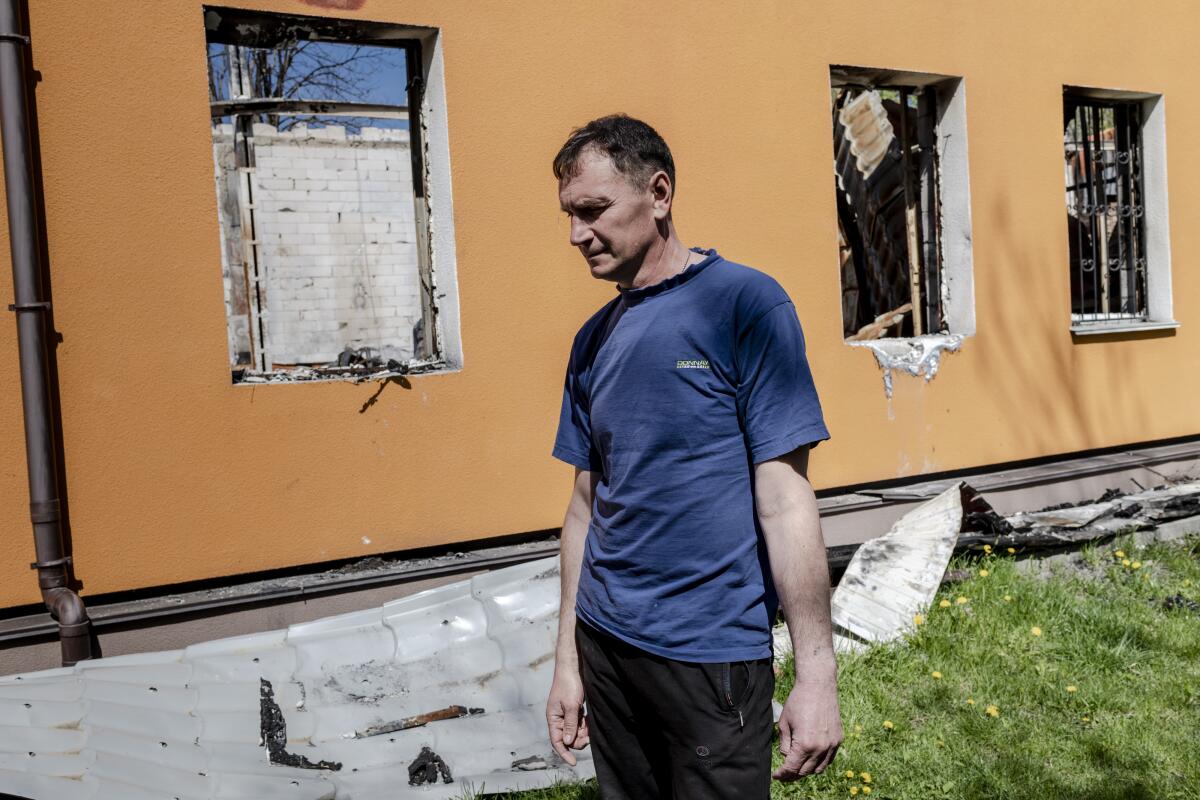
Anatoly Harytonov stands beside the window he used to get in and out of the burning museum.
“Of course I was afraid!” he said. But he was thinking of the talismanic paintings that had been familiar to him since 2005, when he began working part-time for the museum: a boy leading a multicolored team of plow animals, chanting a prayer for rain; a woman surrounded by enormous orange flowers; a winged red horse against a deep-blue, star-dappled background.
“These are the most precious things we have,” he said. “If they burned, it would be a terrible shame to all of us.”
A nation’s sense of self
Cultural heritage is the sticky glue of national identity. Embarking on this war, Russian President Vladimir Putin told his people — and the next-door neighbors his army had commenced battering — that Ukraine is not a real country, and many here believe that the pattern of destruction that has emerged in nearly 11 weeks of warfare cannot be coincidental.
Among countless homes and infrastructure targeted daily in Russian strikes, there is another category of loss — historic buildings, religious institutions, libraries and museums — avatars, all of them, of a nation’s sense of self.
Deliberately taking aim at cultural-heritage sites is a war crime under the 1954 Hague Convention to which both Russia and Ukraine are signatories. Ukrainian President Volodymyr Zelensky, mourning a strike on a museum late last week in eastern Ukraine, singled out such attacks as “evil.”
“Targeted missile strikes at museums — not even terrorists would think of this,” he said in an address to the nation after a museum dedicated to the 18th century philosopher and poet Hryhorii Skovoroda was hit. “But such an army is fighting against us.”
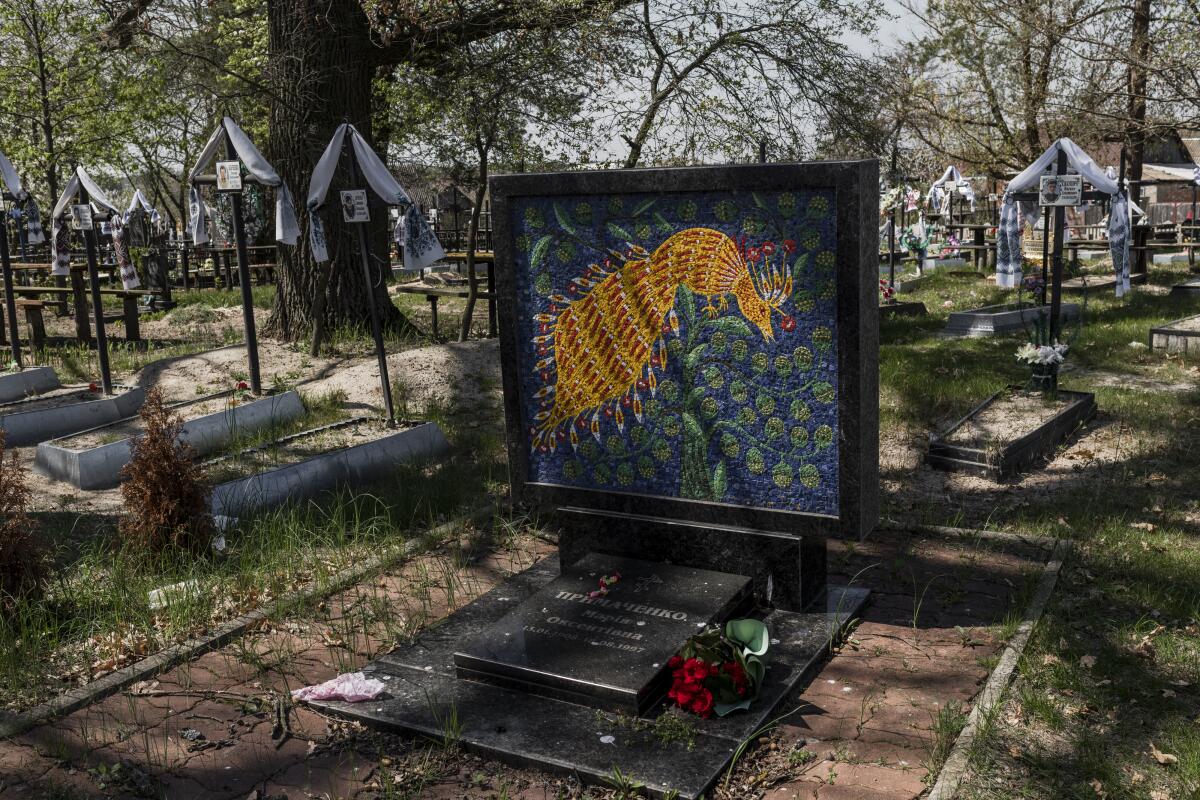
Maria Prymachenko’s grave in the small town of Bolotnya, where she died in 1997.
At the beginning of the month, UNESCO, the United Nations’ cultural agency, said it had confirmed damage to 120 Ukrainian cultural sites, among them religious places, museums and historic landmarks. Some of this destruction is primarily to property; in other instances, grievous loss of life is involved as well.
One of the locations UNESCO cited was a landmark theater in the southern port of Mariupol that hundreds of civilians were using as a bomb shelter when it was hit by an airstrike on March 16. An analysis by the Associated Press suggested up to 600 people may have died, making it one of the war’s deadliest single strikes.
At the outset of the fighting, desperate to protect cultural treasures, Ukrainians erected scaffolding around public statuary, sandbagged ornate historic buildings and filled hidden vaults with precious items. Many museums closed their doors and secreted away their collections. But despite such protective efforts, by the time Zelensky spoke last weekend, he said nearly 200 cultural sites had been destroyed.
“Every day of this war, the Russian army does something that is beyond words,” he said. “But every next day, it does something that makes you feel it in a new way.”
‘A powerful imagination’
Even for those who have long studied her work, Prymachenko’s appeal can be difficult to explicate. Her works, in the naive art style, are mysterious yet radically accessible, evoking ancient legend — somehow joltingly fresh, grandiose yet earthy, primal but imbued with subtle layers of meaning.
Children in particular seem to gravitate instinctively to the paintings, said Lina Zhurska, the director of a children’s art school a short walk from the ruined museum. For her and her pupils, the weeks-long Russian occupation of the town, with all its attendant terrors, had both the dreamlike clarity and the nightmare opacity of a Prymachenko piece.
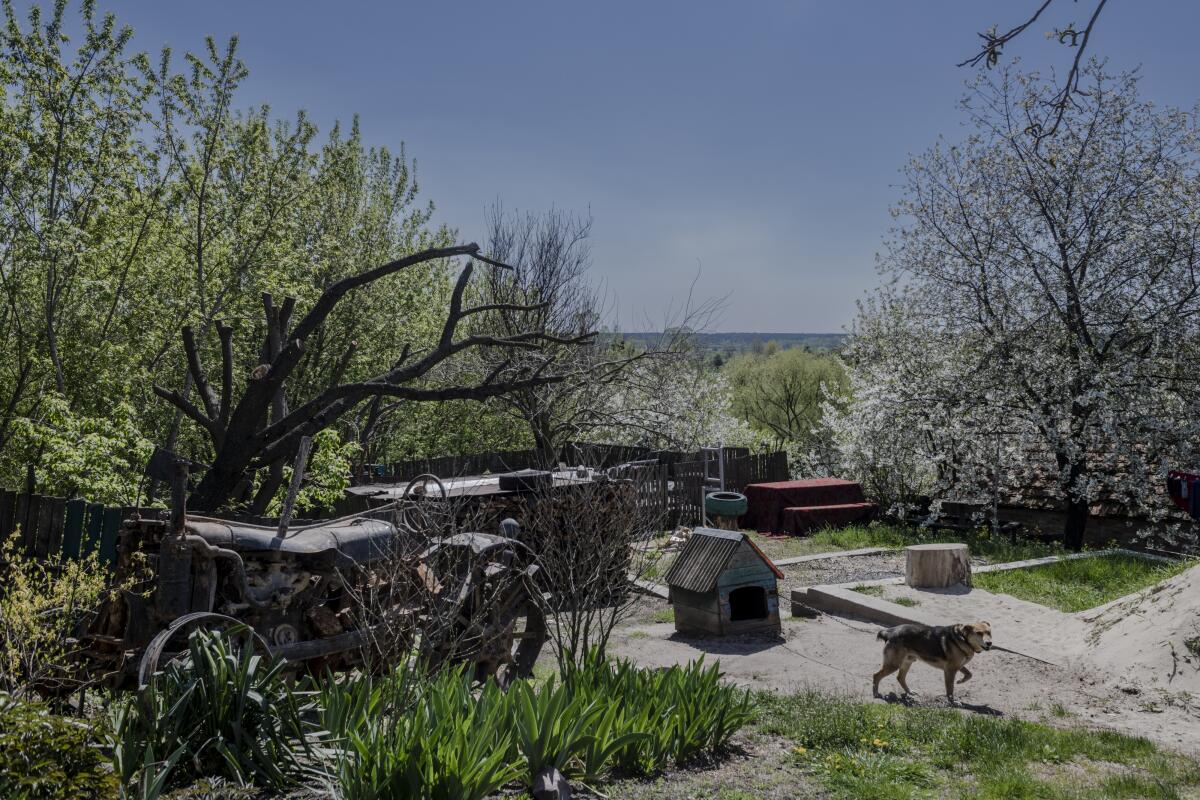
“They see these beasts, these fantastic beasts of hers,” Zhurska said, gesturing toward a wall with students’ drawings and paintings inspired by the artist, “and they know such things are real.”
Under a peaceful, pastoral surface, calamity can lurk, and Prymachenko knew this better than most. After an illness-shadowed childhood, she lost her husband to World War II, and for long after, she turned away from her self-taught art.
The 1986 nuclear disaster at Chernobyl, only 30 miles distant, inspired a series of troubling and enigmatic works. War and peace were longtime obsessions, giving an added weight to her work in these harrowing days.
In photos, Prymachenko is a stocky, stoic, almost peasant-like presence: head covered, sometimes by a flowered scarf, a difficult-to-read expression. Townspeople who knew her remember her as generous and down-to-earth, spontaneously bestowing embroidered cloths and ceramic plates as gifts, but with a mystical quality that set her apart even from those who knew her for much of their lives.
“She had such power in her person, such a powerful imagination,” said Halyna Korennaya, 61, who helped curate exhibits at the museum here and met Prymachenko later in life. “People can talk about a ‘naive’ style of art, but it holds such complicated meaning.”
With a giggle, Korennaya said: “In truth, she was weird!” Then, turning serious: “No one else has such a perception of this life, this world.”
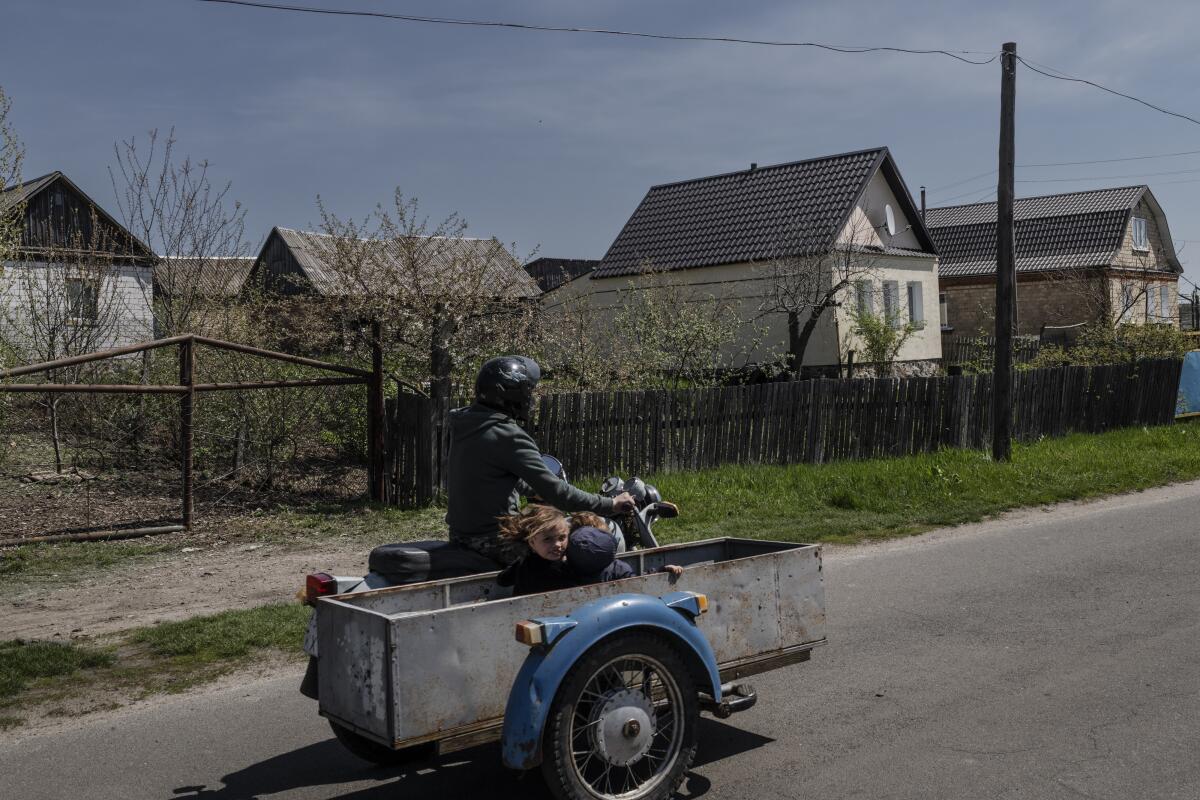
The village of Bolotnya, where Maria Prymachenko lived.
Of the hundreds of Prymachenko’s works created over a period spanning the 1930s to the 1990s, some met fates as strange as something their creator might have conjured. The family home, where her now-deceased artist son Fedir was living at the time, was robbed in 2006. More than 70 artworks were taken; a few eventually turned up. Many others vanished, seemingly for good.
Over the years, Prymachenko’s iconic style was much imitated, with many paying tribute and some seeking to expropriate it. In ways not always well understood, her vision became a kind of cultural currency, some scholars say. Olena Sheshtakova of the National Academy of Fine Arts and Architecture said Prymachenko helped put Ukraine on the art-world map.
“I think she was one of the most influential artists of the century,” said Shestakova, who helped organize major retrospectives after Prymachenko’s death.
Yet even she sometimes feels a full understanding of the artist still eludes her.
“I feel such a strong connection to her work,” she said. “She was thinking in allegories all the time. In her way, she explored the relation of humans and the universe. So her work, this symbiosis she created, is like an intermediary between heaven and earth.”
A premonition
Korennaya had a premonition. As war was bearing down, she procured an enormous wooden container that had been used to store wheat. She and others removed the Prymachenko paintings from the museum’s walls and placed them inside for safekeeping. But the gargantuan container remained inside the museum.
After the bombardment hit, Korennaya realized, in a panic, that the paintings would not be protected from flames. But by then, Harytonov and his friends had pried away the window bars, entered the burning building and begun ferrying the Prymachenko works to safety, passing them out one by one.
The big wooden barrel was left behind. It burned, along with many of the museum’s treasures.
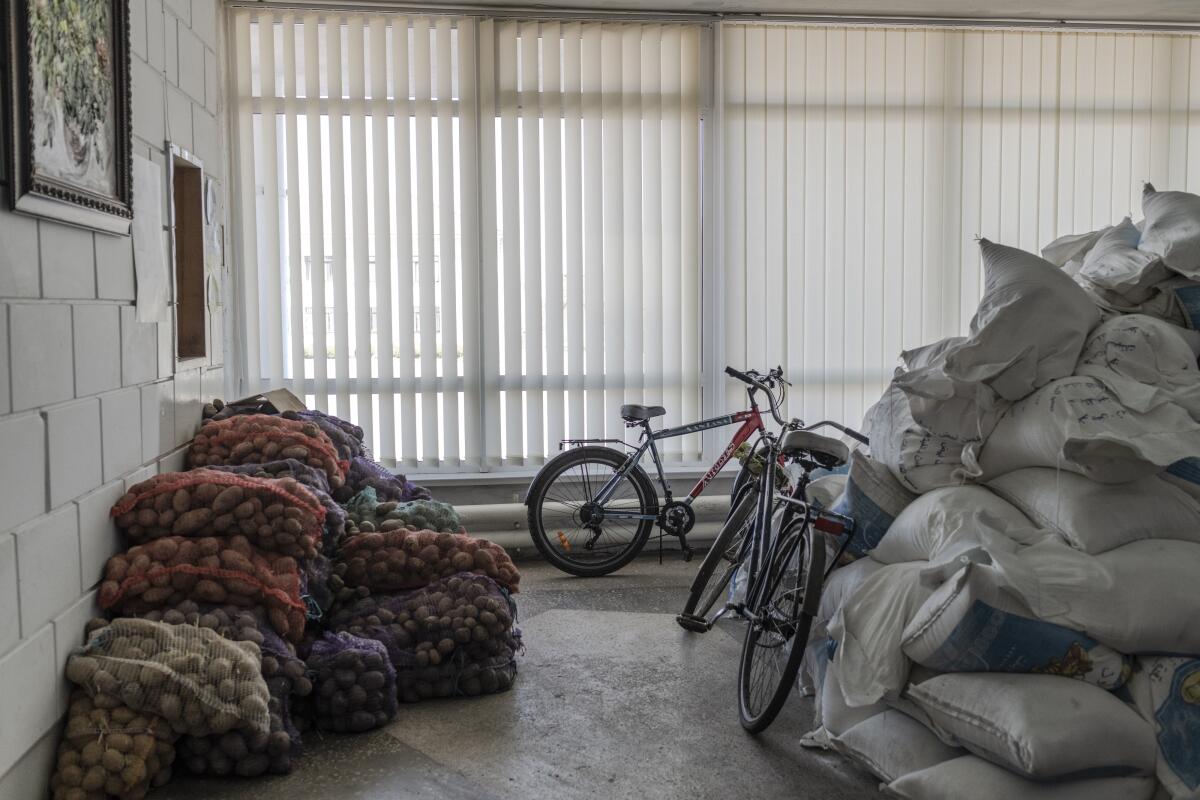
Food stored in a municipal building in Ivankiv, Ukraine.
Today, the museum’s orange walls are scorched, its blackened windows gaping like missing teeth. Even weeks later, an acrid smell hangs in the air. A few items have been salvaged, like an antique tractor that was lifted out of the ruins by crane and temporarily deposited in Harytonov’s garden.
In early, fog-of-war accounts of the museum bombing, the central government in Kyiv announced that all the museum’s Prymachenkos had been lost. But later, after Ivankiv was back in Ukrainian hands, town officials said that although the museum itself was a total loss, the 14 paintings were safe in an undisclosed location. They vow the art will again be displayed in Ivankiv.
In yet another sign of the wartime resonance of Prymachenko’s work, a painting of hers called “Flowers Grew Around the Fourth Block” — part of her Chernobyl series, featuring flamelike blooms and a trio of reptilian heads with flickering tongues — was recently auctioned off to an overseas Ukrainian buyer for $500,000, with proceeds announced to be going to the Ukrainian armed forces, the auction house and a charitable foundation said.
Despite immense relief over the paintings’ fate, Korennaya wonders if the museum, which underwent a renovation that was completed in 2019, will ever be restored to its former state.
“It’s like having a child, and that child dies,” she said. “My soul is in pain.”
Biryuk, the town culture department director, said she believed that once the war is over, the outside world will help rebuild the museum. She sometimes wonders, she said, what Prymachenko would have made of events that have befallen this little town.
“If she were alive to see this war, it would have been reflected in her work,” Biryuk said. “All these forces at work here, all this terror, she would have represented it somehow. But in what way, we can’t know.”
More to Read
Sign up for Essential California
The most important California stories and recommendations in your inbox every morning.
You may occasionally receive promotional content from the Los Angeles Times.

